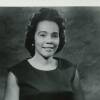This week on Boston Public Radio, Jared Bowen walked listeners through his recent trip through America's South. It’s a trip he took to better understand American history and the civil rights memorials that are there to make sure this is history that we never forget. As Bowen explained, it was the convergence of two interviews that compelled him to take this trip.
“I've interviewed Bryan Stevenson, who wrote 'Just Mercy' and founded the Equal Justice Initiative, which is the force behind the National Memorial for Peace and Justice. And I’ve interviewed Michael Murphy, who is the co-founder of Mass Design, which was the design firm behind the National Memorial for Peace and Justice in Montgomery, and The Embrace right here in Boston.” Bowen said in talking to both of these men he understood how important it was to be in these places, “and to see history for myself in a place that I have only read about.”
The National Civil Rights Museum at the Lorraine Motel
Bowen started his trip at the National Civil Rights Museum at the Lorraine Motel in Memphis where Martin Luther King was assassinated in 1968. Bowen described how the museum takes you through the beginning of slavery, starting with the bill of sale for a ten-month old baby, moving on through the Freedom Riders, winding through the sanitation workers strike, which brought Martin Luther King back to Memphis where he was ultimately assassinated.
“I was struck by his last words," said Bowen. “He had stepped out onto that balcony and he saw a musician, Ben Branch, who was scheduled to perform that night at an event that King was to attend. And King said, ‘Ben, make sure you play “Take my Hand, Precious Lord,” in the meeting tonight. Play it real pretty.’ And then he was killed.”

The Emmett Till Interpretive Center
Bowen then described his trip to the Emmett Till Interpretive Center in Sumner, Mississippi. It’s dedicated to the legacy of Emmett Till, the 14-year-old Black boy who was murdered by two white men, Roy Bryant and John Milam, for allegedly flirting with Roy Bryant's wife, Carolyn Bryant. In 1955 the men were acquitted by an all-white jury. Bowen said being in the courthouse where those men were found not guilty was profound.

“In 2007, there was an apology issued by the community to the Till family," said Bowen. "I met two of the people who negotiated the policy from the community. One of the things they asked you to do if you're visiting the courthouse is to pass around the apology and read it out loud, which I and the rest of my group did."

The Edmund Pettus Bridge
Bowen then travelled to Selma, Alabama to visit the Edmund Pettus Bridge. In 1965 John Lewis and other activists marched across this bridge in the fight for voting rights. It was a day that became infamous when state troopers blocked their path using tear gas and brute physical force.

While there, Bowen met Lynda Blackmon Lowery, who at age 15 was the youngest person to march at Selma. When she was crossing the Edmund Pettus Bridge she heard gunfire, she saw the police, she was choking on tear gas and then the police started to beat her.
“She told me that she had 35 stitches" said Bowen. "She still has a scar over her right eye. She was very brutally beaten. She said that the looks on her attackers', It was what she called, ‘a smug type of hatred’ that she had not seen again until she saw Derek Chauvin, George Floyd's killer.”

The National Memorial for Peace and Justice
Bowen also described visiting the National Memorial for Peace and Justice, in Montgomery, Alabama. It was created by lawyer and social justice activist Bryan Stevenson. It's made up of a number of parcels of land on the second highest point in Montgomery. It's adjacent to the Alabama River, which made it key to the slave trade. “This memorial was designed so that you are confronted with the agony of the slave trade,” explained Bowen.

“You enter into the memorial and you see a sculpture of the slave trade by artist Kwame Akoto-Bamfo. The looks on the faces of enslaved people in chains and a mother carrying her baby is devastating.” Bowen then described another part of the memorial — the suspended steel beams. “There are hundreds of these beams, these monuments, each with a name of a county and the names of the people who were lynched there. And so some will have one name and some will have 20 or 30 names on them.”

Bowen wrapped up his trip with a visit to the Ebenezer Baptist Church in Atlanta, Georgia, which is known as the spiritual home of Dr. Martin Luther King Jr. When Bowen attended church that day, the pastor was Reverend Raphael Warnock. “His sermon was so much about courage,” said Bowen, "just finding the courage, don't allow yourself to be boxed in, to know when it's time to to move forward and step up and step out. “








